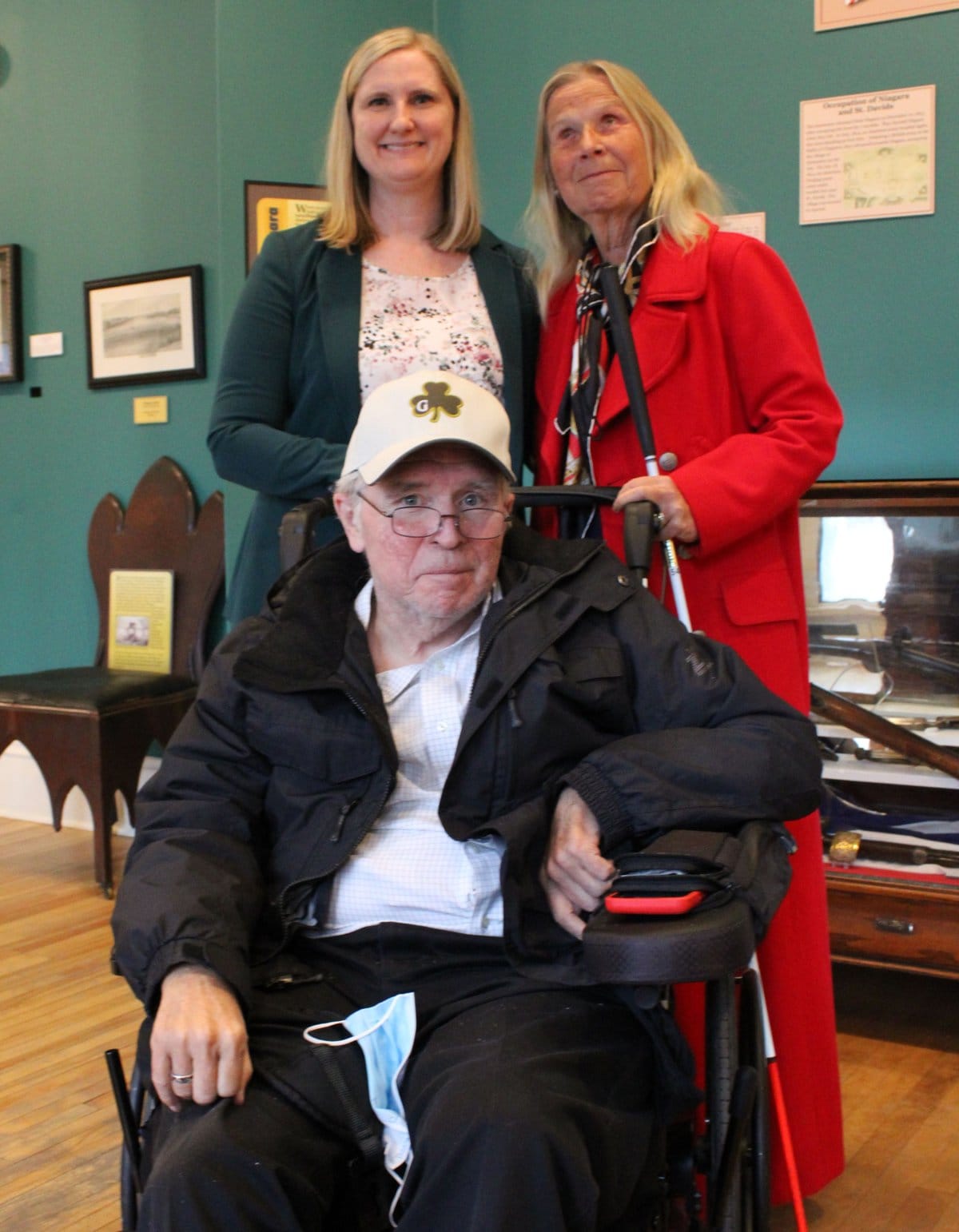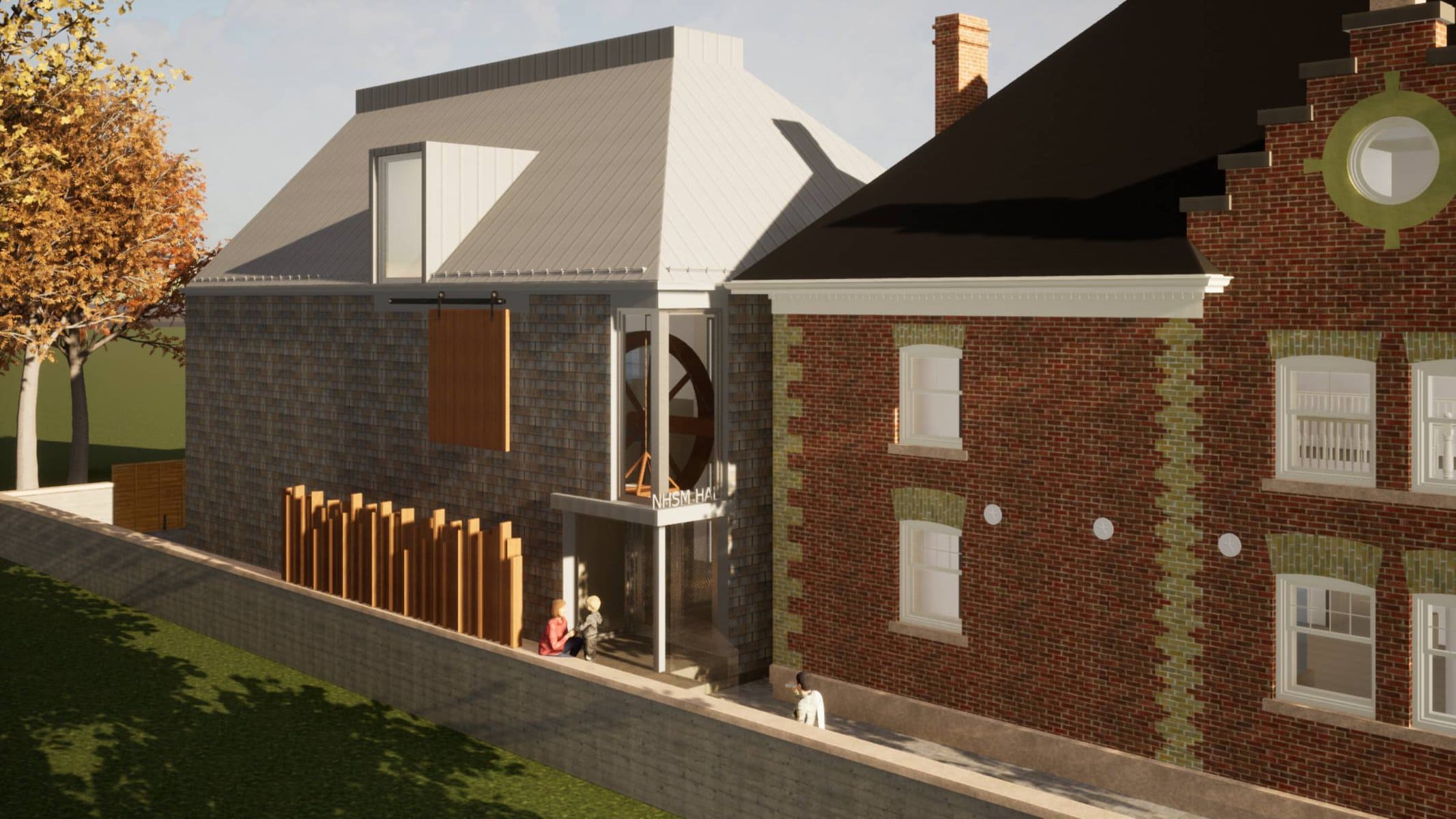This is the fifth part in an ongoing series of stories to draw attention to the Niagara-on-the-Lake Museum as it embarks on a fundraising campaign for an expansion that would nearly double the size of the current museum on Castlereagh Street.
There aren’t too many things Ben Buholtz likes better than visiting his local museum.
He loves it so much, in fact, that he became a member of the board of directors for the Niagara Historical Society, which operates the Niagara-on-the-Lake Museum on Castlereagh Street.
But as it stands right now, Buholtz is unable to take in the whole museum experience.
He has mobility issues and relies on a wheelchair to get around.
Until accessibility improvements are made at the museum, it will remain that way for the Niagara-on-the-Lake resident and others with accessibility needs.
“One of the big challenges is just getting in the front door,” he said. “This one isn’t too bad but I don’t know how many places in Niagara we’ve been to…. There’s no accessibility at all.”
He’d also like to see improvements made to the width of doorways inside the building as well.
“Getting through is hard, especially with a monster like this thing,” he said, drawing attention to his wheelchair.
Visiting the museum’s upper galleries is also a challenge, as the only access to them is via stairs.
Museum managing director and curator Sarah Kaufman said this is something that will be addressed in the museum’s expansion, along with several other design changes to make the museum more accessible.
“The intention with the design of the exhibits is to be accessible both for physical but visual and for hearing and such,” Kaufman said. “We want to get the proper accessibility consultants to give us the advice.”
Improved accessibility is one of the main drivers of expansion plans for the facility.
To that end, the museum has embarked on its Building History, Strengthening Community fundraising campaign to help finance an 8,000-square-foot expansion.
The new space will nearly double the museum’s current size of 10,000 square feet, add much-needed storage and exhibition spaces and provide space to deliver programs for the community.
The expansion project will pay special attention to accessibility, with the addition of an elevator, to help the museum meet accessibility requirements by Jan. 1, 2025, as set out under the Accessibility for Ontarians with Disabilities Act.
“The big thing for me is it’s not just so visitors are comfortable, but also staff who might have mobility or sight issues to be able to get around,” Kaufman said.
“To a person who has some mobility issues or sight issues, the right to independence is an important one, and we want to be able to provide that with the museum as well.”
Through the campaign, the museum hopes to raise $5 million to cover half of the $10-million cost of the project, which will include a two-storey addition to the rear of Memorial Hall and more basement space for storage.
Buholtz’s partner, Jodey Porter, hopes that one day she, too, will be able to experience the museum more fully.
Porter, a museum member, is visually impaired. While she can navigate her way to the museum on Castlereagh Street from her home a few blocks away, once she’s inside, there is little that can help her take in the exhibits.
Instead, she relies on voice-activated smartphone apps.
“There are things now called Good Maps that I’ve used,” Porter said. “If I hold my phone up, it will say straight ahead of you there are washrooms on your right or straight ahead of you is a hallway to the exhibit hall.”
Porter uses an app on her cell phone called Open My Eyes AI. Using the phone’s camera, the app will describe to a tee exactly what’s around her.
During the interview for this story, Porter demonstrated the app. Taking a photo inside the main entrance to the museum, the app told her the following:
“This picture was taken inside a well-lit store with bookshelves and various items on display. In the foreground, there is an elderly man seated in a motorized wheelchair.”
The scene being described by the app was the museum’s gift shop. The “elderly gentleman in the motorized wheelchair” was Buholtz.
“Be My Eyes is actually a worldwide network of volunteers – I think 8 million volunteers – and 300,000 blind people log on (to the app) any time of the day,” Porter said.
Setting aside the accessibility act’s requirements, Kaufman said, the museum is anxious to get going on making the facility accessible to all despite the fact the expansion won’t be completed in time for the act’s Jan. 1 deadline.
“There’s no word from the government of what’s happening with that if they’re delaying it or whatever, because of COVID but either way, the board here and staff we all believe that accessibility needs to happen anyways,” she said.
“Once everyone can get in, there’s no barrier to learning about the history here in the community … I want all of them to feel comfortable and to be able to come to our programs to learn about our exhibits.”
Hopes are for the expansion to be completed by 2026, which is the 100th anniversary of the death of the museum’s founder, Janet Carnochan.
Donations to the campaign can be made in person at the museum, at 43 Castlereagh St., during operating hours, 1 to 5 p.m. seven days a week, or online at canadahelps.org/en/charities/niagara-historical-society.











